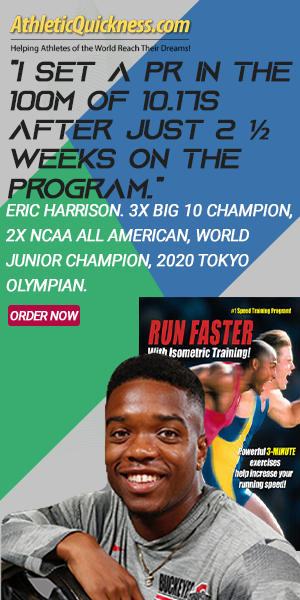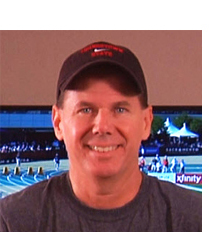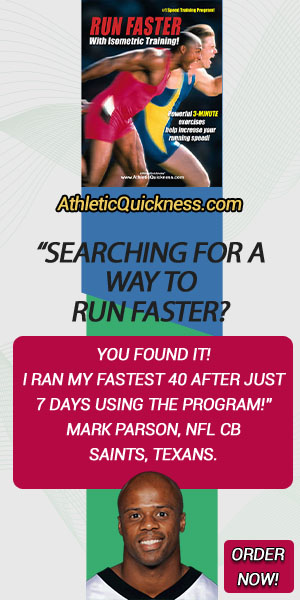If you couldn’t see the torques being generated by the arms and legs where there was an obvious moving body part involved, then you stood no chance of ever seeing this fifth and final one, that being the torque produced by muscles along the spine and torso where its production is even more obscure. And, since you stood no chance, we are going to have our male athlete take a seat to help me explain it to you. See Figure 1
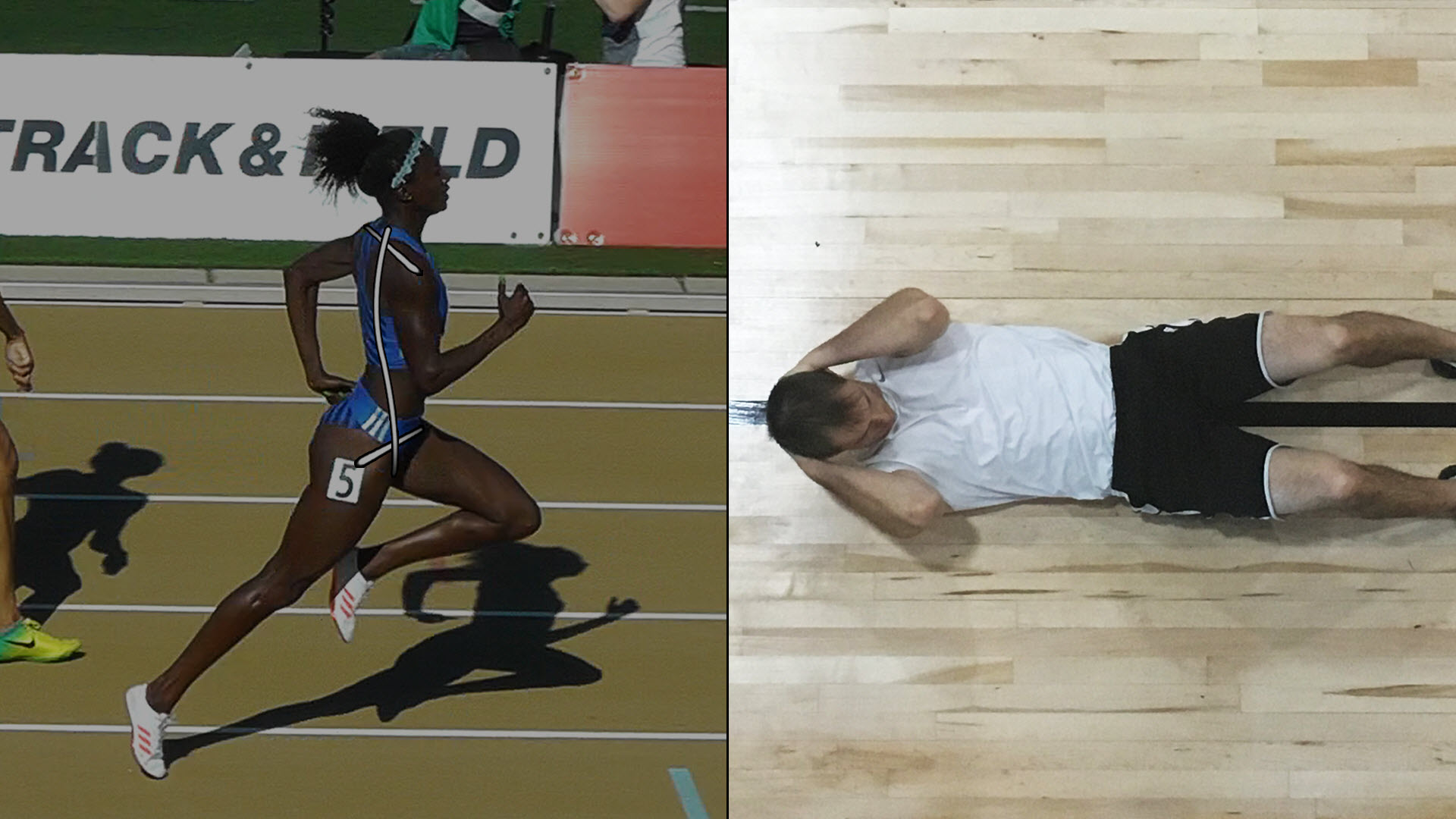
In this position, I’m going have to first have him come up and perform a regular sit-up because I need him at the top of this movement to draw on him. So, let’s show him with his torso fully flexed up toward his knees as seen in Figure 2 below.

Now I can go ahead and place the face of the clock back over the top of him as seen in Figure 3 below, and you will notice I have him positioned such that my vertical line is lined up with his shoulders since those will be the best landmarks for us to look at as I demonstrate this last remaining torque.
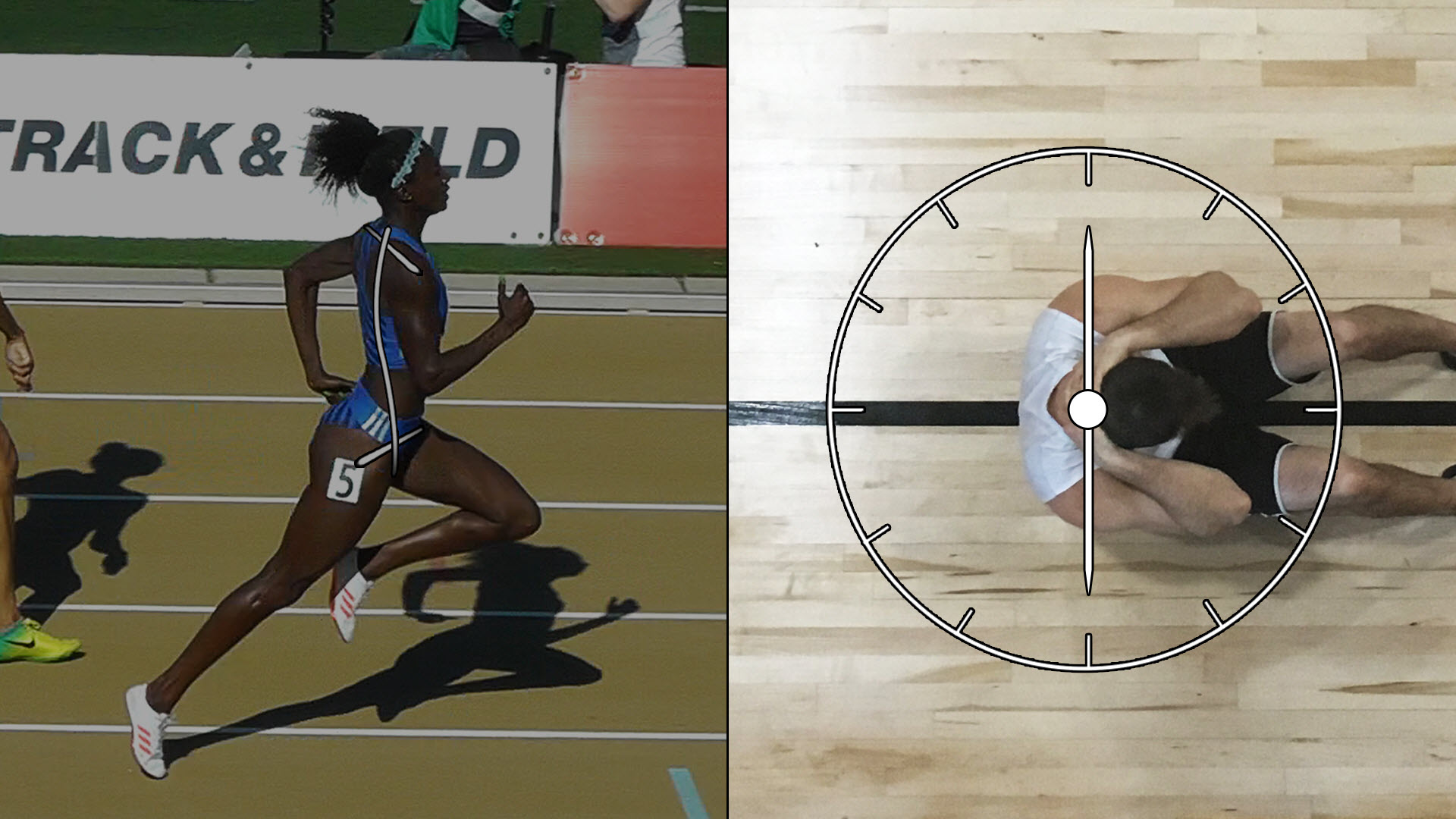
Now, during an oblique sit-up, our athlete has the choice of rotating his torso either to the left or to the right while he flexes upward, and so I am going to show him rotated to his left, as seen in Figure 4 below. And the reason I chose to show him rotated to his left instead of his right is because having him rotated to his left puts his shoulders and arms in similar positions as that of our female athlete with both of their right arms going forward and left arms going backward.

Now, in order for this rotational movement to occur in our male athlete, muscles known as spinal rotators must contract. More specifically, it’s the spinal rotators on the right side of his body that contract to cause his torso to rotate to his left as we see in Figure 5 below.

And if we simply follow the path his shoulders have taken, we can see very clearly, they both have traveled in a CCW direction. See Figure 6 below.
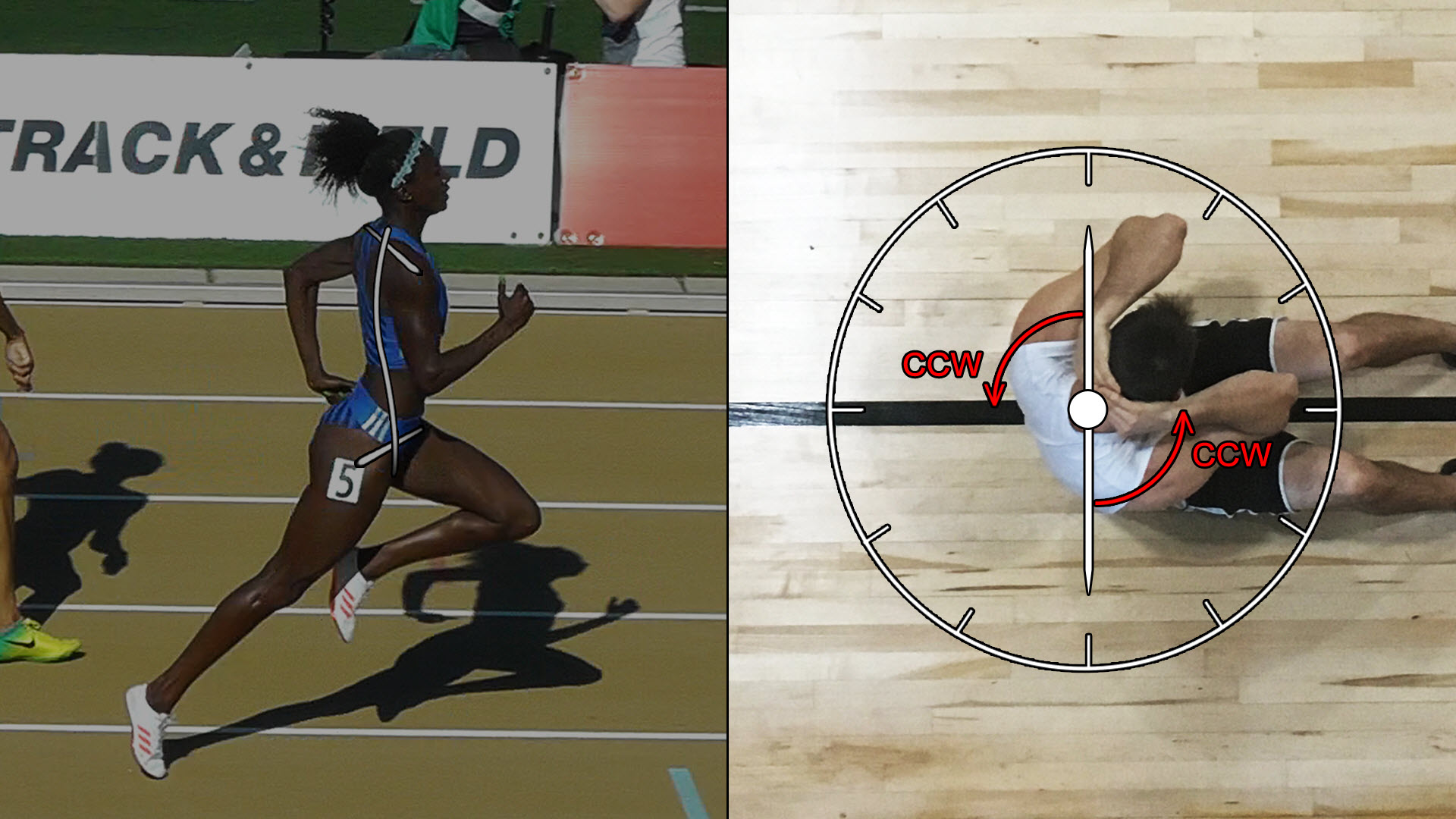
But again, with regards to the muscles producing this rotation, it’s only the spinal rotators on the right side of his body that are causing it which I will now draw with a single red arrow inward, a little tighter, as seen in Figure 7 below to better depict where this torque is being generated from.
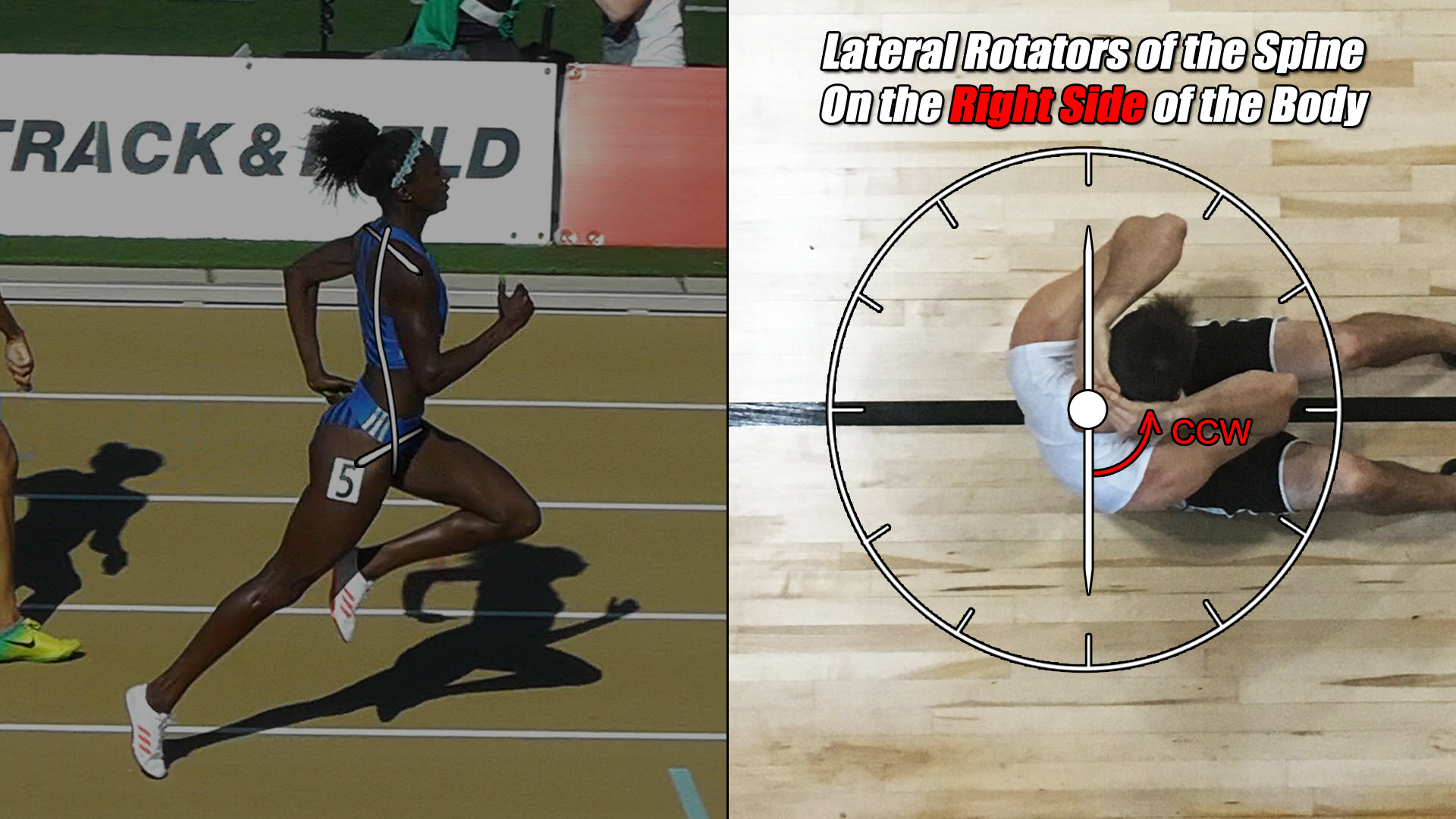
And now, I’m going to keep this little CCW red arrow in place and then return him back to where he was originally and with his right arm still going forward and left arm still going backward, hopefully now you can appreciate the rotation in his torso caused by this, less than obvious, torque. See Figure 8 below.
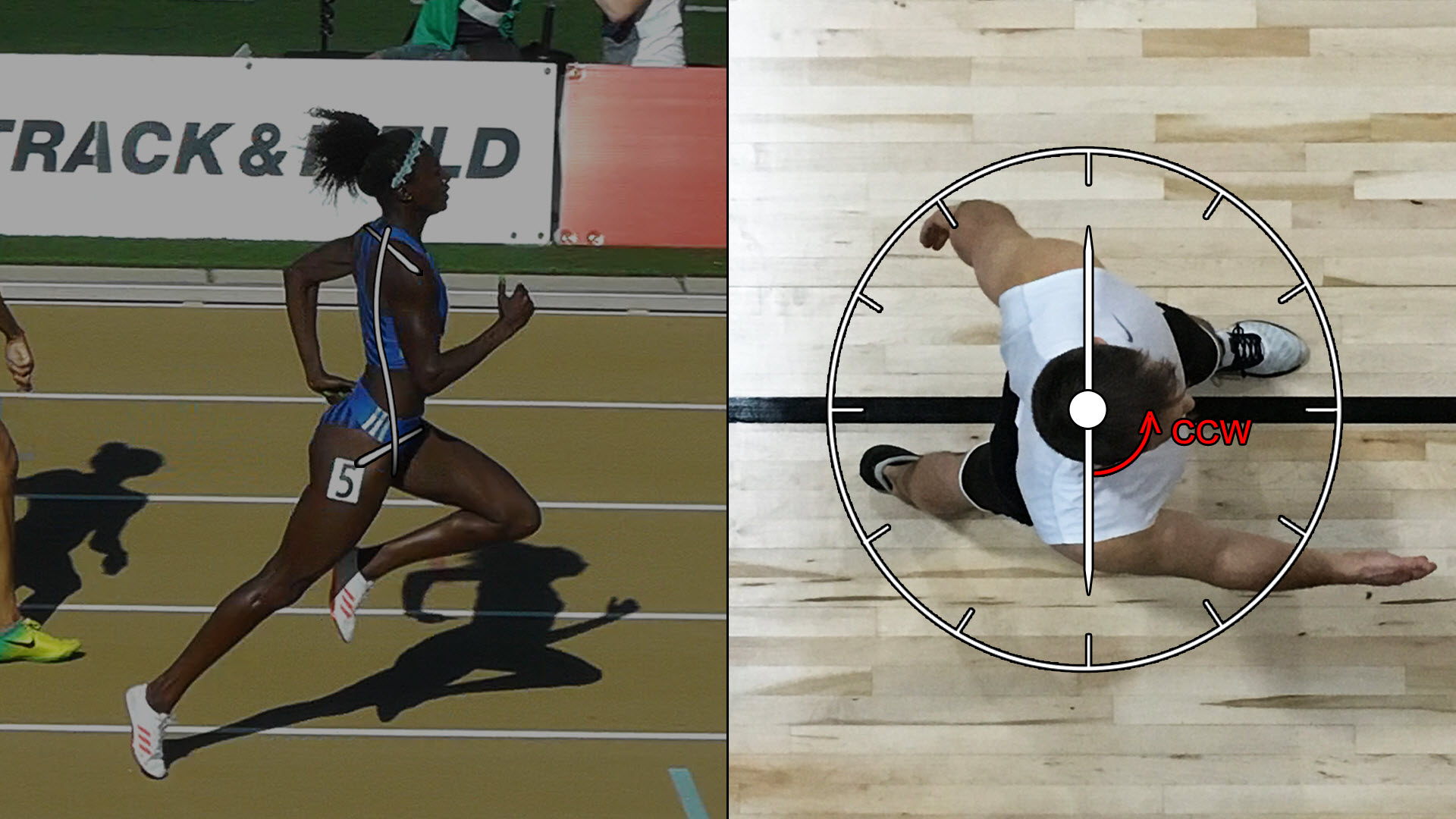
And let’s go ahead and place the corresponding counterclockwise red arrow showing this rotational force, on our female track athlete. See Figure 9 below.

And, so, this is the fifth and final torque our body must generate in order to help us run effectively.

